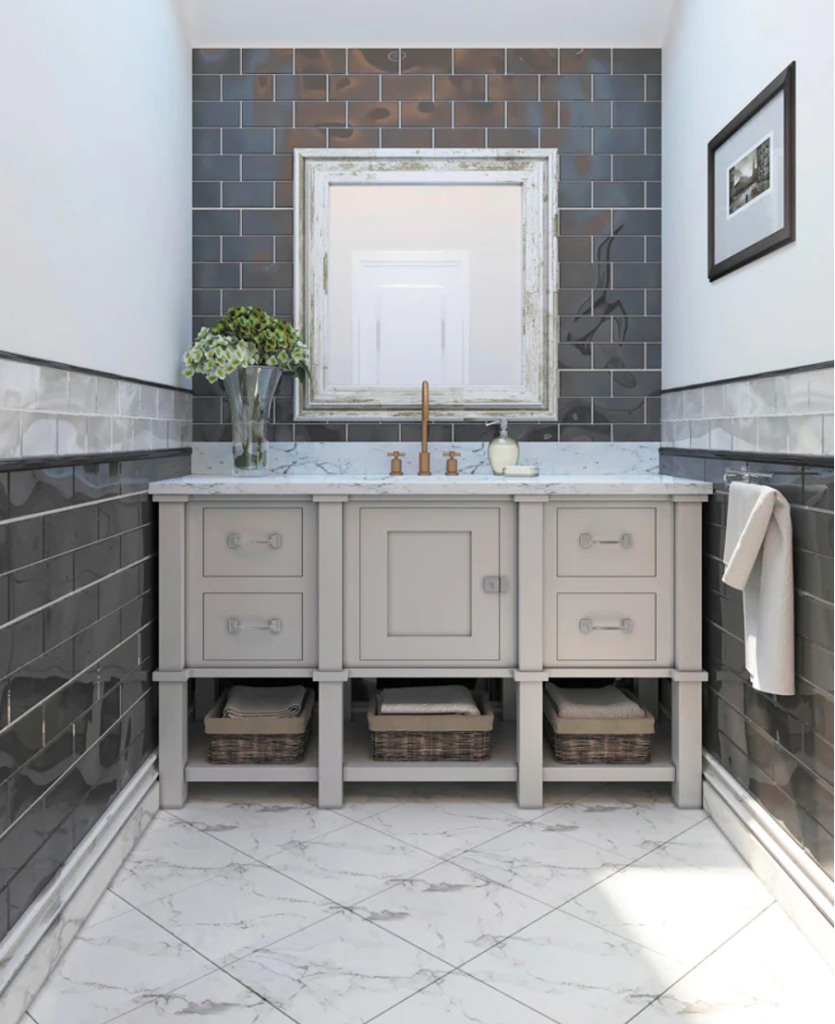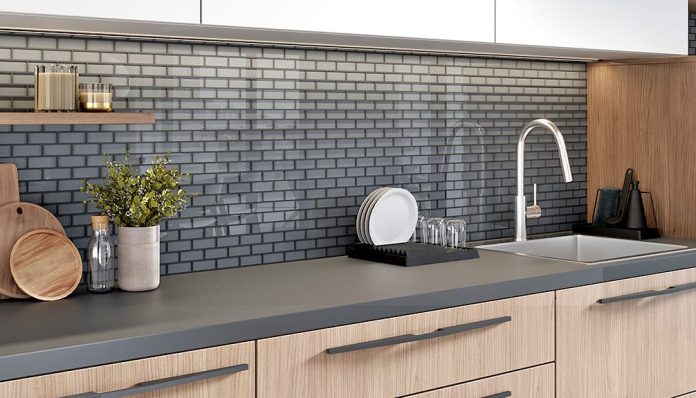
Tiles have a huge focal point on how your kitchen and bathroom look and function. But what happens when they have seen better days? Can you refinish old, worn-out wall and floor tiles? Absolutely!
Average wear and tear, moisture, heavy footfall, and cleaning agents can damage the tile finish. Whether you have a classic kitchen with glossy gray tile or a rustic bathroom with wood-look planks, making the old look new again is possible!
Tile refinishing, also known as reglazing, is a cost-effective and practical way to recreate a new lustrous surface. We’ve put together this simple guide on what to know about bathroom and kitchen refinishing.
- What to consider before refinishing?

Bathroom and kitchen tiles that were once a sight for sore eyes can look dull and dated after years of use. If they are still in good condition, a refresh may be all that’s needed to bring a fading luster to its former glory using safe and efficient methods. The process involves filling and resealing grout lines, brightening tile finish, and, in some cases, updating color and texture.
It is important to consider the type of tile, its use, and how much wear and tear it experiences. This helps determine the materials and tools to use to rejuvenate your tiles. Also, take a moment to think about your aesthetic goals.
Do you want to make worn-out areas new again while maintaining the current appearance? With refinishing, you can keep an old design, say classic ceramic tiles that inject character but have seen better days. Or do you prefer an entirely new color or texture to give your space a whole new vibe?
Lastly, consider long-term goals for your home. If selling at a later stage is part of the plan, a refinishing solution that complements a broader range of aesthetics will be more appealing to potential buyers.
- Which tiling materials can be refinished?

Tile refinishing can be done on most materials, specifically those made of ceramic, porcelain, or natural stone. Shower walls and bathtub surrounds subjected to moisture can be refinished. A tiled kitchen backsplash is also an excellent candidate. Flooring too, can be revitalized to its original luster.
- What are the signs that tiles need a refinish?

Refinishing may be necessary when the dull, slippery surface, and tacky feeling seem like a permanent condition. Or when stains and scratches detract from the appeal of your tilework. Although thorough extraction and cleaning may work their magic to a like-new condition, surface coating is what prevents issues from reoccurring.
- Will refinishing save you time and money?

This process is a far more practical choice than removing the entire tilework. It saves you up to 50% of the cost of new tiles and labor involved in Rip & Replace. Plus, you avoid the time and mess that comes with a new tiling project. Compared to painting or a tile repair tool, refinishing is a superior option that adds durability and lasts longer. However, if tiles are in bad disrepair, it might be time to replace rather than rejuvenate.
- What is the refinishing process?

Professional refinishing uses specialized equipment, primers, bonding agents, topcoats, and clear sealants to achieve the desired look. But with proper planning and preparation, the DIY route is possible.
First, the tiled kitchen backsplash or bathroom wall is cleaned to remove dirt, grease, and soap residue. Once clean, any holes, cracks, or chips are repaired and grout lines filled. Next, lightly sand the tile to create a rough texture for better bonding. Reglazing involves applying a two-part liquid epoxy formula over the dated and worn-out grout and tile. Use a roller or brush and follow the manufacturer’s instructions.
Make sure it dries completely being applying a sealant to newly refinished tiles. This step adds a barrier against moisture, stains, and regular wear and tear. While not as strong as the original glaze, the results are beyond impressive. No more dull, stained, or discolored marble, ceramic, porcelain, or glass tile!


Your words are powerful and have the ability to make a real difference in people’s lives Keep using your voice to spread positivity and knowledge
I always look forward to reading your posts, they never fail to brighten my day and educate me in some way Thank you!
You have a way of making each of your readers feel seen and heard That’s a special quality that not all bloggers possess Thank you for creating a safe space for us